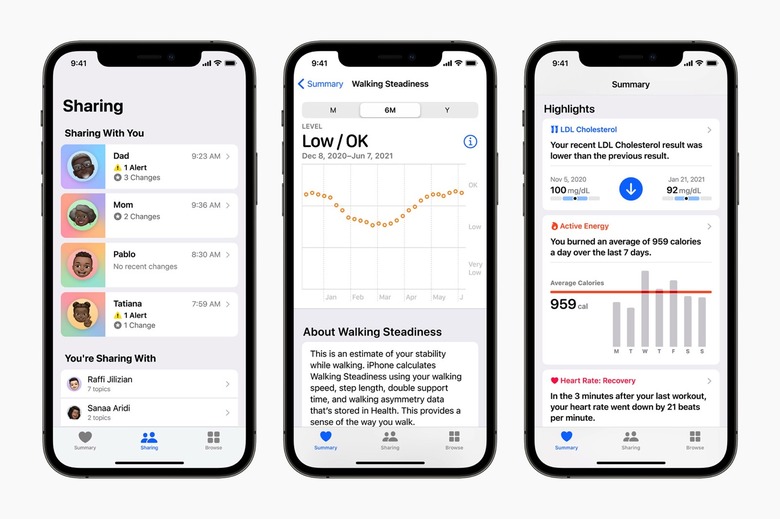iOS 15 Will Make The Health App More Useful Than Ever
On Monday, Apple unveiled all of its upcoming operating system updates at WWDC 2021. With Apple's Craig Federighi calling the shots, various executivess detailed and demoed the most exciting new features from iOS 15 and iPadOS 15, watchOS 8, tvOS 15, and macOS Monterey. But Apple also dedicated ample time to a few essential parts of life that transcend a single operating system.
Apple talked about improving privacy across services and products and explained how the various smart home devices will work with the different software innovations across all of its products. Similarly, health was a separate topic during the event, as the Health app isn't on just one OS.
The Health app collects data from the iPhone, so it could have been a segment for iOS 15. But it also works with Apple Watch, which runs watchOS 8. On top of that, Health supports other apps and devices that can share health data with the iPhone. The Health app is all the more critical considering the difficult years of the pandemic, and Apple signaled at WWDC 2021 yet again that Health is a core feature across its devices.
If you're a regular Health app user, you'll appreciate the new features that Apple added to the app. If you hardly open the app, the new iOS 15 feature might nudge you into actually giving the Health app a prominent placement on your home screen. That's because the Health app is no longer just about you, the iPhone and Watch owner. It's also about your family.
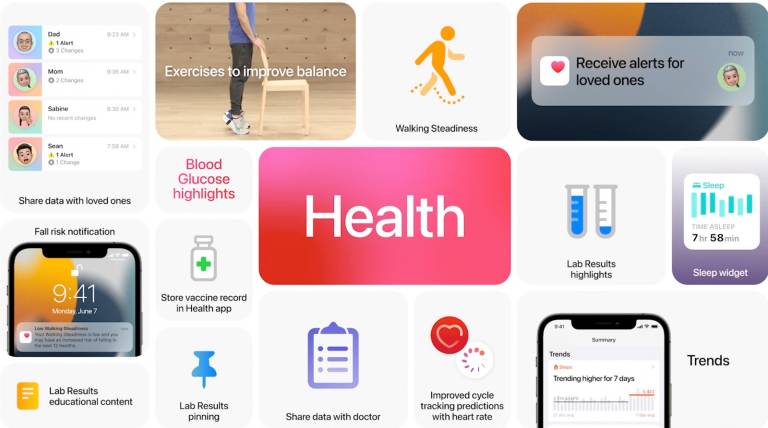
A slide showing the new features in Apple Health.
Apple added a few exciting updates to the Health app that should make monitoring health parameters even easier for you and your loved ones. That's because the Health app now lets you share data with other people, whether it's your physicians who might want more contextual data about your exercising and health parameters or your parents, children, and partners.

Sharing heart rate data from the Health app with a physician.
While it's obvious why sharing data with doctors is an excellent addition to the app, it's sharing data with your family that could be even more useful.
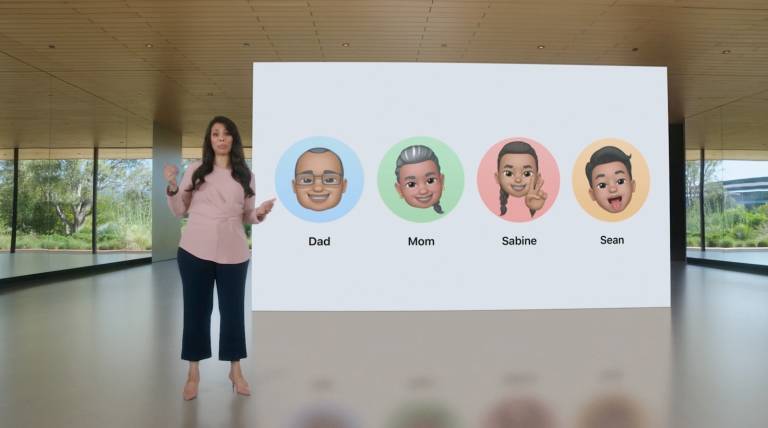
The new Health sharing feature in iOS 15.
Older adults can choose to start sharing health and wellness data with their children right from the iPhone. That way, children will know when their parents aren't well, even from afar. Notifications will come in real-time, informing family members that some parameters are out of the ordinary. This can include heart data, mobility data, and anything else that might trigger an alert. Early alerts can then be followed by faster doctor appointments, improving treatments and saving more lives.
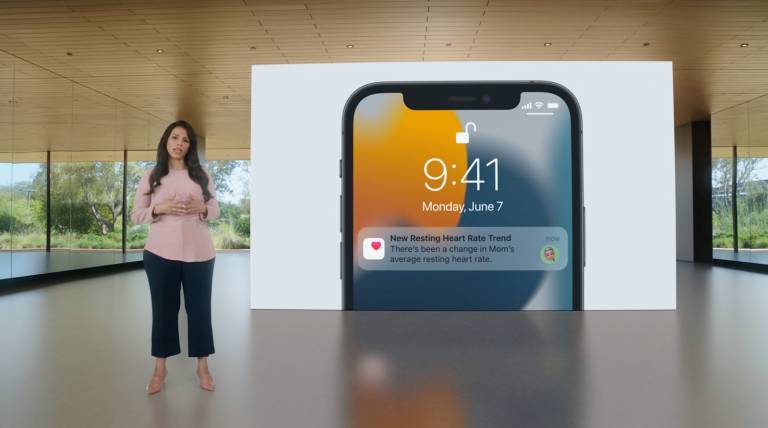
A notification tells the iPhone owner their mother's average resting heart rate has changed.
Health in iOS 15 will also show trends, both personal and for other people. These trends can also be used to get an idea of whether someone in your family is feeling well or whether they should consider medical assistance. The trends feature can be used to advance exercise goals, not just monitor health parameters.
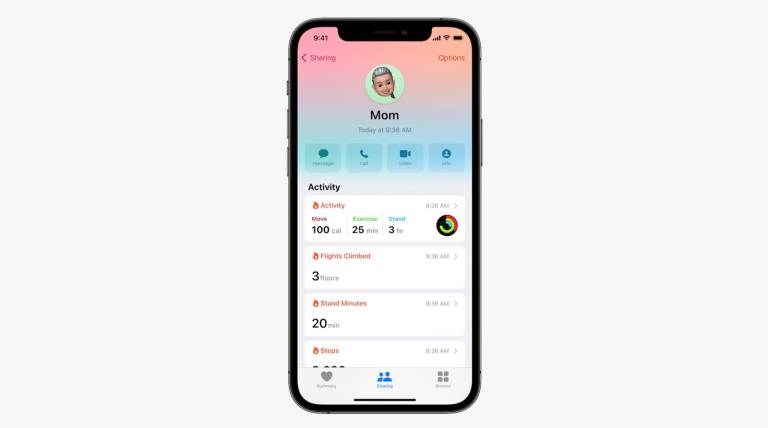
Health app shows health parameters for the user's mother.
Walking Steadiness is one of the new Health features that might make you appreciate the app even more. The iPhone will analyze a person's movements and score their mobility. In turn, this could predict whether a person will risk suffering a fall in the future. The algorithms will classify Walking Steadiness as "OK," "Low," and "Very Low" and will even suggest exercises that can improve a person's mobility.
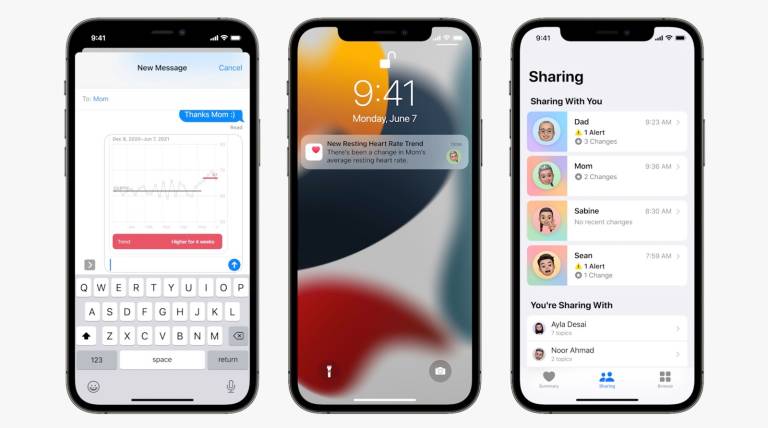
Health in iOS 15: Trends (left), heart rate change (center), and data sharing with family (right).
All the information that is shared between iPhone and Watch users and their doctors or family members is end-to-end encrypted, and the information is not available to Apple or anyone else. Users get to control how many parameters they share with others and can modify them and stop sharing at any time.
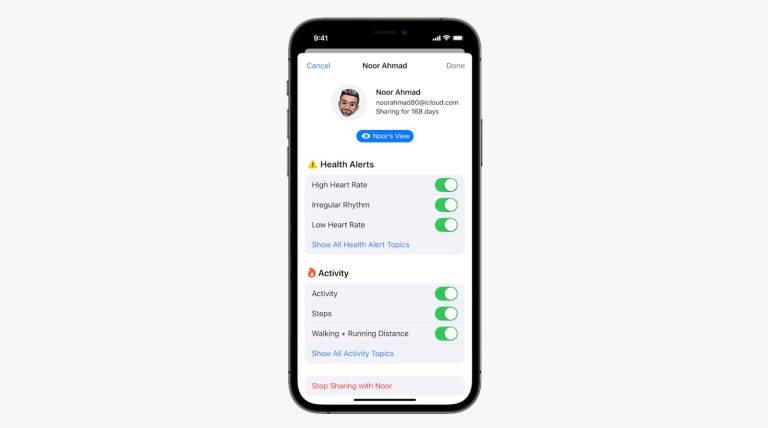
Users can control what Health parameters to share with other people.
Also new in the Health app is a new respiratory rate measurement, which will be available on Apple Watch after the watchOS 8 update.
The new lab experience includes more educational materials to make it easier for people to review their lab test results and understand what they mean.

The Health app will display more educational information about lab tests.
Finally, iPhone users will be able to store medical records of immunization and test results in the Health app by simply downloading verifiable COVID-19 vaccination or test results from an online browser or QR code.
